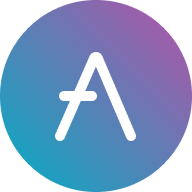
CRO
Курс Cronos
$0,090760
+$0,00019000
(+0,20 %)
Динамика цены за 24 часа

Какой у вас прогноз для CRO сегодня?
Дайте ваш рыночный прогноз: поставьте палец вверх, если ожидаете роста курса этой криптовалюты, или палец вниз, если ожидаете падения.
Проголосуйте, чтобы посмотреть результаты
Дисклеймер
Информация о социальных сетях на этой странице («Информация»), в том числе публикации из X и статистика от LunarCrush, предоставлена третьими сторонами и приводится только для справки. OKX не гарантирует качество и точность Информации. Статья не отражает взглядов OKX и не является инвестиционным советом и рекомендацией, предложением или призывом к покупке, продаже и хранению цифровых активов, а также финансовым, бухгалтерским, юридическим или налоговым советом. Цифровые активы, в том числе стейблкоины и NFT, сопряжены с высокими рисками и волатильностью. Цена и доходность цифровых активов не фиксирована и может в любой момент измениться.
OKX не дает рекомендаций по инвестированию и хранению активов. Тщательно оцените свою финансовую ситуацию и определите, подходит ли вам торговля и владение цифровыми активами. По вопросам, связанным с вашими конкретными обстоятельствами, обращайтесь к специалистам в области законодательства, налогов или инвестиций. С подробностями можно ознакомиться, изучив Условия использования и Предупреждение о рисках. Переходя на сайты третьих сторон («Сторонние сайты»), вы принимаете их условия использования. OKX и ее партнеры («OKX») не связаны с владельцами и руководителями Сторонних сайтов, если иное не указано в письменной форме. Вы соглашаетесь с тем, что OKX не несет ответственности за убытки, ущерб и любые другие последствия использования Сторонних сайтов. Помните, что использование Сторонних сайтов может привести к полной или частичной потере активов. Продукт может быть доступен не во всех юрисдикциях.
OKX не дает рекомендаций по инвестированию и хранению активов. Тщательно оцените свою финансовую ситуацию и определите, подходит ли вам торговля и владение цифровыми активами. По вопросам, связанным с вашими конкретными обстоятельствами, обращайтесь к специалистам в области законодательства, налогов или инвестиций. С подробностями можно ознакомиться, изучив Условия использования и Предупреждение о рисках. Переходя на сайты третьих сторон («Сторонние сайты»), вы принимаете их условия использования. OKX и ее партнеры («OKX») не связаны с владельцами и руководителями Сторонних сайтов, если иное не указано в письменной форме. Вы соглашаетесь с тем, что OKX не несет ответственности за убытки, ущерб и любые другие последствия использования Сторонних сайтов. Помните, что использование Сторонних сайтов может привести к полной или частичной потере активов. Продукт может быть доступен не во всех юрисдикциях.
Рыночные данные Cronos
Рыночная капитализация
Рыночная капитализация рассчитывается путем умножения объема криптовалюты в обращении на текущий курс.
Рыночная капитализация = объем в обращении × цена последней сделки
Рыночная капитализация = объем в обращении × цена последней сделки
Объем в обращении
Общая сумма этой криптовалюты в открытом доступе на рынке.
Рейтинг капитализации
Место криптовалюты в рейтинге по рыночной капитализации.
Рекордная цена
Макс. цена криптовалюты, зафиксированная в истории сделок.
Исторический минимум
Минимальная цена криптовалюты, зафиксированная в истории сделок.
Рыночная капитализация
$2,49B
Объем в обращении
27 483 807 470 CRO
97 483 807 470 CRO
: 28,19 %Рейтинг капитализации
33
Аудиты

Последний аудит: 26 сент. 2022 г.
Максимум за 24 ч
$0,092210
Минимум за 24 ч
$0,088270
Рекордная цена
$0,95500
-90,50 % (-$0,86424)
Последнее обновление: 24 нояб. 2021 г.
Исторический минимум
$0,023900
+279,74 % (+$0,066860)
Последнее обновление: 13 мар. 2020 г.
Калькулятор CRO


Статистика Cronos (в USD)
Текущая цена Cronos составляет $0,090760. За прошедшие сутки курс Cronos вырос на +0,21 %. Текущий объем в обращении составляет 27 483 807 470 CRO, а общая эмиссия — 97 483 807 470 CRO. Рыночная капитализация этой криптовалюты при полной эмиссии составит $2,49B. Сейчас Cronos удерживает 33‑ю позицию в рейтинге по рыночной капитализации. Курс Cronos/USD обновляется в реальном времени.
Текущий день
+$0,00019000
+0,20 %
7 дней
+$0,0076800
+9,24 %
30 дней
-$0,00954
-9,52 %
3 месяца
-$0,04748
-34,35 %
Популярные валюты для конвертации Cronos
Последнее обновление: 24.04.2025, 22:56
| 1 CRO в USD | 0,090770 $ |
| 1 CRO в EUR | 0,079792 € |
| 1 CRO в PHP | 5,1168 ₱ |
| 1 CRO в IDR | 1 526,83 Rp |
| 1 CRO в GBP | 0,068177 £ |
| 1 CRO в CAD | 0,12581 $ |
| 1 CRO в AED | 0,33340 AED |
| 1 CRO в VND | 2 363,19 ₫ |
Описание Cronos (CRO)
Рейтинг составляется на основе сведений, собранных из доступных источников. Данные предоставляются исключительно в информационных целях. OKX не гарантирует качество и точность рейтингов. Рейтинг не является инвестиционным советом и рекомендацией, предложением или стимулом к покупке, продаже и хранению цифровых активов, а также финансовым, бухгалтерским или налоговым советом. Цифровые активы, в том числе стейблкоины и NFT, сопряжены с высокой степенью риска, их курсы могут сильно колебаться вплоть до полного обесценивания. Цифровые активы не застрахованы от возможных убытков. Доходность в прошлые периоды не гарантирует доходность в будущем. OKX не гарантирует доход, возвращение основного капитала и процентов. OKX не предоставляет рекомендаций по инвестированию и использованию активов. Перед инвестированием тщательно оцените ваше финансовое состояние и определите, подходит ли вам торговля и удерживание цифровых активов. Перед торговлей рекомендуем проконсультироваться со специалистом по юридическим, налоговым или инвестиционным вопросам.
Развернуть
- Официальный сайт
- Техническое описание
- Github
- Обозреватель блоков
О сторонних веб-сайтах
О сторонних веб-сайтах
Используя сторонний сайт, вы соглашаетесь с тем, что любое его использование будет регулироваться условиями стороннего сайта. OKX и его партнеры («OKX») никоим образом не связаны с владельцем или оператором стороннего сайта, если это прямо не указано в письменной форме. Вы соглашаетесь с тем, что OKX не несет ответственности ни за какие потери, ущерб и любые другие последствия, возникшие в результате использования вами стороннего сайта. Помните, что использование стороннего сайта может привести к утрате или сокращению ваших активов.
Вопросы и ответы о Cronos
Что такое Cronos?
Блокчейн Cronos популярен среди разработчиков для создания широко масштабируемых приложений, услуг и продуктов, которые могут взаимодействовать с другими блокчейнами. Cronos хорошо подходит для разработки DeFi-приложений и блокчейн-игр.
Как можно использовать CRO?
CRO — это нативный служебный токен и токен управления блокчейна Cronos. Он используется для оплаты комиссии за газ при совершении транзакций в сети Cronos. Кроме того, CRO можно применять для голосования по предложениям по управлению блокчейном Cronos и для повышения уровня скидки на торговую комиссию на централизованной бирже Crypto.com.
Чем Cronos отличается от Crypto.org?
Cronos и Crypto.org — это два разных блокчейна, несмотря на то что оба были созданы и поддерживаются Crypto.com. Оба блокчейна используют CRO в качестве нативного токена.
Сколько стоит 1 Cronos сейчас?
Сейчас курс Cronos составляет $0,090760. На этой странице вы найдете анализ динамики Cronos. Изучите актуальные графики Cronos и торгуйте ответственно с OKX.
Что такое криптовалюта?
Криптовалюты (как Cronos) — это цифровые активы, работающие в общедоступном онлайн-реестре, называемом «блокчейн». На OKX вы найдете множество криптовалют с подробной статистикой в реальном времени — графиками объема и курса и др.
Когда появились криптовалюты?
Интерес к децентрализованным финансам значительно возрос в 2008 году на фоне мирового финансового кризиса. Тогда Bitcoin стал инновационным решением, предложившим надежный цифровой актив, работающий в децентрализованной сети. С тех пор в мире появились тысячи новых токенов, в том числе и Cronos.
Поднимется ли сегодня цена Cronos?
Просмотрите Страница прогноза цен на Cronos, чтобы узнать прогнозы цен и определить целевые цены.
Раскрытие данных ESG
Нормативные предписания ESG (экологические, социальные и управленческие факторы) в сфере криптоактивов направлены на снижение их экологического воздействия (например, за счет сокращения энергоемкого майнинга), повышение прозрачности и обеспечение этичного управления. Эти меры помогают интегрировать криптоиндустрию в более широкую стратегию устойчивого развития и учитывать общественные интересы. Нормативные предписания способствуют соответствию стандартам, снижению рисков и укреплению доверия к цифровым активам.
Сведения об активах
Название
OKcoin Europe LTD
Соответствующий идентификатор юридического лица
54930069NLWEIGLHXU42
Название криптовалютного актива
Cronos
Механизм консенсуса
Cronos is present on the following networks: cronos, ethereum.
Cronos operates on a Proof of Stake (PoS) model integrated with Tendermint’s Byzantine Fault Tolerant (BFT) consensus, designed for decentralization, security, and interoperability. This model enables validators to be selected based on staking power, rewarding them for securing and validating the network. Core Components: Proof of Stake (PoS) with Tendermint BFT Validator Selection: Validators are chosen based on the amount of CRO tokens staked, securing the network and producing blocks. Delegation Model: Token holders can delegate their CRO to validators, enabling participation in network security without needing to run a validator node. Cosmos SDK and Inter-Blockchain Communication (IBC) Cross-Chain Connectivity: Built on the Cosmos SDK, Cronos enables cross-chain communication, connecting to other Cosmos blockchains and ecosystems such as Ethereum and Binance Smart Chain.
The Ethereum network uses a Proof-of-Stake Consensus Mechanism to validate new transactions on the blockchain. Core Components 1. Validators: Validators are responsible for proposing and validating new blocks. To become a validator, a user must deposit (stake) 32 ETH into a smart contract. This stake acts as collateral and can be slashed if the validator behaves dishonestly. 2. Beacon Chain: The Beacon Chain is the backbone of Ethereum 2.0. It coordinates the network of validators and manages the consensus protocol. It is responsible for creating new blocks, organizing validators into committees, and implementing the finality of blocks. Consensus Process 1. Block Proposal: Validators are chosen randomly to propose new blocks. This selection is based on a weighted random function (WRF), where the weight is determined by the amount of ETH staked. 2. Attestation: Validators not proposing a block participate in attestation. They attest to the validity of the proposed block by voting for it. Attestations are then aggregated to form a single proof of the block’s validity. 3. Committees: Validators are organized into committees to streamline the validation process. Each committee is responsible for validating blocks within a specific shard or the Beacon Chain itself. This ensures decentralization and security, as a smaller group of validators can quickly reach consensus. 4. Finality: Ethereum 2.0 uses a mechanism called Casper FFG (Friendly Finality Gadget) to achieve finality. Finality means that a block and its transactions are considered irreversible and confirmed. Validators vote on the finality of blocks, and once a supermajority is reached, the block is finalized. 5. Incentives and Penalties: Validators earn rewards for participating in the network, including proposing blocks and attesting to their validity. Conversely, validators can be penalized (slashed) for malicious behavior, such as double-signing or being offline for extended periods. This ensures honest participation and network security.
Система поощрений и применимые комиссии
Cronos is present on the following networks: cronos, ethereum.
Cronos incentivizes validators and delegators with staking rewards and transaction fees, aligning economic incentives with network security and growth. Incentive Mechanisms: Staking Rewards Validators and Delegators: Both groups earn CRO rewards for supporting network security. Delegators earn a portion of the validator rewards, promoting broader network participation. Deflationary Mechanism Token Burning: A portion of transaction fees and staking rewards may be periodically burned, reducing CRO supply over time and potentially increasing token value. Applicable Fees: Transaction and Smart Contract Fees Standard Transactions: Users pay CRO for network transactions and dApp interactions, providing a steady income for validators. Ethereum-Compatible Gas Fees: Executing Ethereum-compatible smart contracts incurs gas fees, similar to Ethereum, payable in CRO.
Ethereum, particularly after transitioning to Ethereum 2.0 (Eth2), employs a Proof-of-Stake (PoS) consensus mechanism to secure its network. The incentives for validators and the fee structures play crucial roles in maintaining the security and efficiency of the blockchain. Incentive Mechanisms 1. Staking Rewards: Validator Rewards: Validators are essential to the PoS mechanism. They are responsible for proposing and validating new blocks. To participate, they must stake a minimum of 32 ETH. In return, they earn rewards for their contributions, which are paid out in ETH. These rewards are a combination of newly minted ETH and transaction fees from the blocks they validate. Reward Rate: The reward rate for validators is dynamic and depends on the total amount of ETH staked in the network. The more ETH staked, the lower the individual reward rate, and vice versa. This is designed to balance the network's security and the incentive to participate. 2. Transaction Fees: Base Fee: After the implementation of Ethereum Improvement Proposal (EIP) 1559, the transaction fee model changed to include a base fee that is burned (i.e., removed from circulation). This base fee adjusts dynamically based on network demand, aiming to stabilize transaction fees and reduce volatility. Priority Fee (Tip): Users can also include a priority fee (tip) to incentivize validators to include their transactions more quickly. This fee goes directly to the validators, providing them with an additional incentive to process transactions efficiently. 3. Penalties for Malicious Behavior: Slashing: Validators face penalties (slashing) if they engage in malicious behavior, such as double-signing or validating incorrect information. Slashing results in the loss of a portion of their staked ETH, discouraging bad actors and ensuring that validators act in the network's best interest. Inactivity Penalties: Validators also face penalties for prolonged inactivity. This ensures that validators remain active and engaged in maintaining the network's security and operation. Fees Applicable on the Ethereum Blockchain 1. Gas Fees: Calculation: Gas fees are calculated based on the computational complexity of transactions and smart contract executions. Each operation on the Ethereum Virtual Machine (EVM) has an associated gas cost. Dynamic Adjustment: The base fee introduced by EIP-1559 dynamically adjusts according to network congestion. When demand for block space is high, the base fee increases, and when demand is low, it decreases. 2. Smart Contract Fees: Deployment and Interaction: Deploying a smart contract on Ethereum involves paying gas fees proportional to the contract's complexity and size. Interacting with deployed smart contracts (e.g., executing functions, transferring tokens) also incurs gas fees. Optimizations: Developers are incentivized to optimize their smart contracts to minimize gas usage, making transactions more cost-effective for users. 3. Asset Transfer Fees: Token Transfers: Transferring ERC-20 or other token standards involves gas fees. These fees vary based on the token's contract implementation and the current network demand.
Начало периода, к которому относится раскрытие информации
2024-04-20
Окончание периода, к которому относится раскрытие информации
2025-04-20
Отчет о потреблении энергии
Потребление энергии
57655.70738 (kWh/a)
Источники потребления энергии и методы их оценки
The energy consumption of this asset is aggregated across multiple components:
For the calculation of energy consumptions, the so called “bottom-up” approach is being used. The nodes are considered to be the central factor for the energy consumption of the network. These assumptions are made on the basis of empirical findings through the use of public information sites, open-source crawlers and crawlers developed in-house. The main determinants for estimating the hardware used within the network are the requirements for operating the client software. The energy consumption of the hardware devices was measured in certified test laboratories. Due to the structure of this network, it is not only the mainnet that is responsible for energy consumption. In order to calculate the structure adequately, a proportion of the energy consumption of the connected network, cosmos, must also be taken into account, because the connected network is also responsible for security. This proportion is determined on the basis of gas consumption. When calculating the energy consumption, we used - if available - the Functionally Fungible Group Digital Token Identifier (FFG DTI) to determine all implementations of the asset of question in scope and we update the mappings regulary, based on data of the Digital Token Identifier Foundation.
To determine the energy consumption of a token, the energy consumption of the network(s) ethereum is calculated first. Based on the crypto asset's gas consumption per network, the share of the total consumption of the respective network that is assigned to this asset is defined. When calculating the energy consumption, we used - if available - the Functionally Fungible Group Digital Token Identifier (FFG DTI) to determine all implementations of the asset of question in scope and we update the mappings regulary, based on data of the Digital Token Identifier Foundation.
Калькулятор CRO


Дисклеймер
Информация о социальных сетях на этой странице («Информация»), в том числе публикации из X и статистика от LunarCrush, предоставлена третьими сторонами и приводится только для справки. OKX не гарантирует качество и точность Информации. Статья не отражает взглядов OKX и не является инвестиционным советом и рекомендацией, предложением или призывом к покупке, продаже и хранению цифровых активов, а также финансовым, бухгалтерским, юридическим или налоговым советом. Цифровые активы, в том числе стейблкоины и NFT, сопряжены с высокими рисками и волатильностью. Цена и доходность цифровых активов не фиксирована и может в любой момент измениться.
OKX не дает рекомендаций по инвестированию и хранению активов. Тщательно оцените свою финансовую ситуацию и определите, подходит ли вам торговля и владение цифровыми активами. По вопросам, связанным с вашими конкретными обстоятельствами, обращайтесь к специалистам в области законодательства, налогов или инвестиций. С подробностями можно ознакомиться, изучив Условия использования и Предупреждение о рисках. Переходя на сайты третьих сторон («Сторонние сайты»), вы принимаете их условия использования. OKX и ее партнеры («OKX») не связаны с владельцами и руководителями Сторонних сайтов, если иное не указано в письменной форме. Вы соглашаетесь с тем, что OKX не несет ответственности за убытки, ущерб и любые другие последствия использования Сторонних сайтов. Помните, что использование Сторонних сайтов может привести к полной или частичной потере активов. Продукт может быть доступен не во всех юрисдикциях.
OKX не дает рекомендаций по инвестированию и хранению активов. Тщательно оцените свою финансовую ситуацию и определите, подходит ли вам торговля и владение цифровыми активами. По вопросам, связанным с вашими конкретными обстоятельствами, обращайтесь к специалистам в области законодательства, налогов или инвестиций. С подробностями можно ознакомиться, изучив Условия использования и Предупреждение о рисках. Переходя на сайты третьих сторон («Сторонние сайты»), вы принимаете их условия использования. OKX и ее партнеры («OKX») не связаны с владельцами и руководителями Сторонних сайтов, если иное не указано в письменной форме. Вы соглашаетесь с тем, что OKX не несет ответственности за убытки, ущерб и любые другие последствия использования Сторонних сайтов. Помните, что использование Сторонних сайтов может привести к полной или частичной потере активов. Продукт может быть доступен не во всех юрисдикциях.













Социальные сети